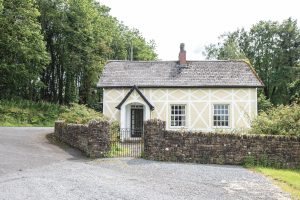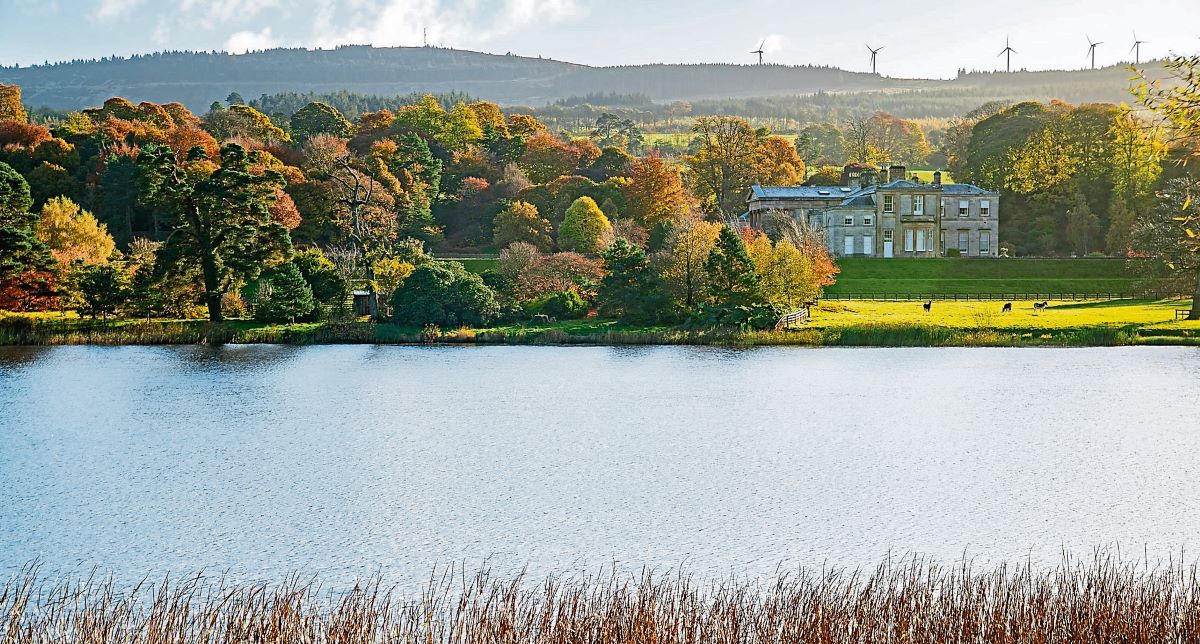Situated at the seat of Bessy Bell, Baronscourt is a staple of the West Tyrone landscape and serves as the county home for the Duke of Abercorn.
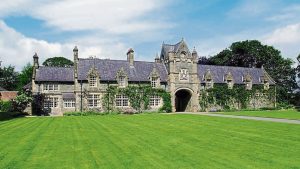
For 400 years, this site has been home to many generations of English and Scottish aristocracy, though the first occupants of the land were the O’Neill clan.
It is believed that the O’Neills built up a small area of land within Lough Catherine, with houses just north of where Baronscourt stands today.
In 1603, following the Nine Year War (also known as the Tyrone Rebellion), the Crown forces acquired much of the land across the North and granted it to Scottish settlers. This Newtownstewart site was claimed under the barony of Strabane Lower, and it was granted to Sir George Hamilton from Renfrewshire in 1610.
Sir George Hamilton, the younger brother of the 1st Earl of Abercorn and a Catholic with ties to King James IV, was the first to build upon the Baronscourt site with his own Derrywoone Castle around 1620.
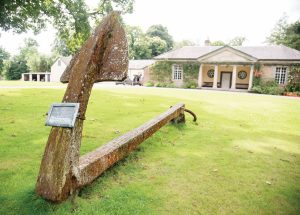
It was designed as an L-shaped, three-storey lowlands Scottish-style castle, complete with large rectangular windows, a bawn, and a round tower
However, it wouldn’t be until over 120 years later that the first iteration of the present-day Baronscourt would be constructed.
In 1742, the 7th Earl of Abercorn, James Hamilton, wanted a Palladian villa built on the Newtownstewart site.
Designed by the Swedish-Scottish architect William Chambers and overseen by local builder and architect, James Martin, the villa was ultimately unsuccessful, attracting very few visitors.
Despite this, the landscape underwent significant transformation in 1746 under the guidance of James Broomfield, the 8th Earl of Abercorn.
Trees were planted, and English deer were introduced to the estate in 1751.
Nowadays, Baronscourt’s lakes, pastures, woodlands and heather moorland provide the ideal habitat for the highly-prized Sika deer to live, breed and thrive.
Throughout the year, they feed on succulent myrtle bog, ryegrass and tasty saplings, which are naturally free of any additives or growth promoters.
Back in the late 1700s, James Broomfield undertook the endeavour of rebuilding the failed estate under the newly-appointed architect, George Steuart, another Scotsman specialising in the neo-classical style.
The new mansion, completed in 1782, was built to be seven bays wide and three stories high, with a stunning outdoor gallery with coupled Tuscan columns and a rotunda at the centre of the plan.
Steuart also constructed a glasshouse for the estate in 1789.
While the remodeling was underway, head gardener, Thomas Hudson, was tasked with developing and expanding the ornamental grounds.
However, the new design proved unsatisfactory to the family, and nine years after completion, architect John Soane was, again, brought in to remodel the estate under the supervision of Robert Woodgate, an apprentice of Soane.
The agent of the first Marquess of Abercorn, John James Hamilton, wrote about the remodeling at the time, stating, “He just reverses the house; what was the backside is to be the entrance, and the front part of the rear.
The drawing room, parlour, and as far back in the hall as the pillars, is to be thrown into one gallery.”
Disaster struck in 1796, when a fire broke out in the main lobby of the house, destroying the centre, but leaving the adjoining wings unharmed.
Architect Robert Woodgate was brought back to oversee the reconstruction of the house, which was completed in 1798.
Further modifications were made in 1835 by father and son architects Richard and William Vitruvias Morrison, who added a library to the elegant manor.
During this time, the garden was extended and redesigned by James Fraser, with a large ramped parterre below the west front later added by William Brodrick Thomas.
Peerage
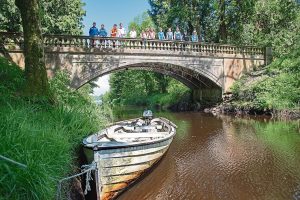
Around this time, the Earl of Abercorn legacy was granted a peerage by the Royal family in 1868.
The peerage was given to James Hamilton, the second Marquess of Abercorn, elevating him to the title of Duke of Abercorn under the appointment of Queen Victoria.
This would not be the only title James would receive, as in August of the same year, he was appointed Earl of Hamilton for Strabane and served as the Lord Lieutenant for Tyrone.
In the early 20th century, unbeknownst to the comfortable residents of Baronscourt, a squad of IRA volunteers had intentions of doing harm to the landlords.
On the night of July 8, 1921, officers from the B-Specials Ulster Special Constabulary spotted around 20 men signalling to one another within the hedges of Dunteague, just a few miles away from Baronscourt.
The officers told the gunmen to put their hands up, to which many of them fled through the fields.
However, two guns started firing from different locations across the field, to which the constables ‘replied vigorously’.
In the aftermath, the only fatality was an ex-British soldier turned IRA man, James McSorley, aged 26, from Drumlegagh, who sustained a bullet to the chest.
Investigations by the police found that IRA activity reports confirmed their suspicion that they were planning to strike Baronscourt that night while the Duke of Abercorn was there.
This Dukedom has passed through the family, and today it survives in its fifth generation through the aptly-named James Hamilton, in homage to the first peerage.
James, like his forefathers, amassed many titles and successes throughout his life, serving in multiple regiments in the army as an officer, and holding ceremonial roles such as the High Sheriff and later Lord Lieutenant of Tyrone.
His late wife, Sacha Hamilton, was not only well-known for her descent from the widely-respected Russian poet, Alexander Sergeyevich Pushkin, but also for her work as a psychologist during the Troubles.
Sacha Hamilton established the Pushkin Trust and Pushkin Prize, an organisation that promotes art therapy for young people.
She was also a patron of the Omagh Community Youth Choir and was appointed honorary secretary of the Northern Ireland Centre for Trauma & Transformation following the Omagh bombing.
The Duke and Duchess’ estate in Baronscourt, held from their family’s 400-year-old legacy in Ireland, attracted the attention of the late Prince Philip.
Sacha was a close friend of Prince Philip, who admired her psychological work and would often visit Baronscourt to compete in carriage driving with the couple.
Today, the estate is only opened fully to the public for local charity fundraisers.
